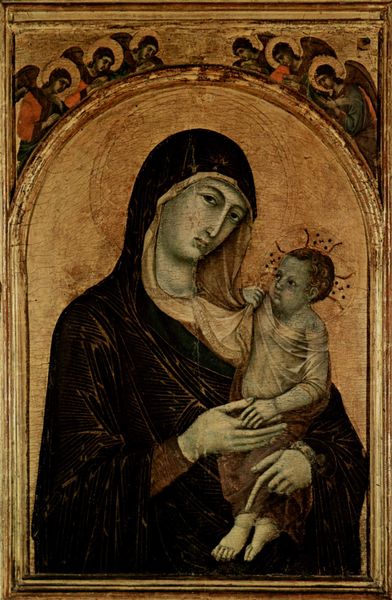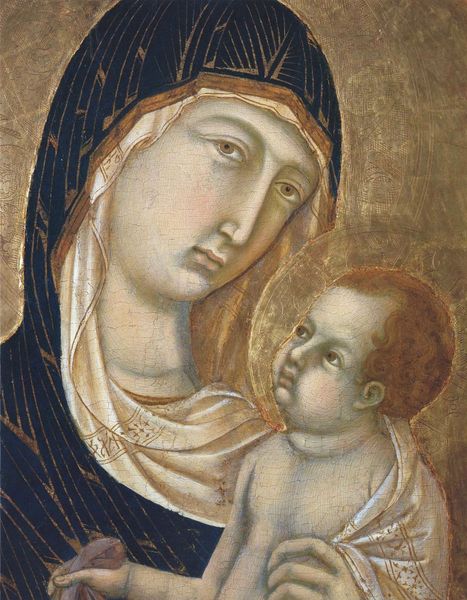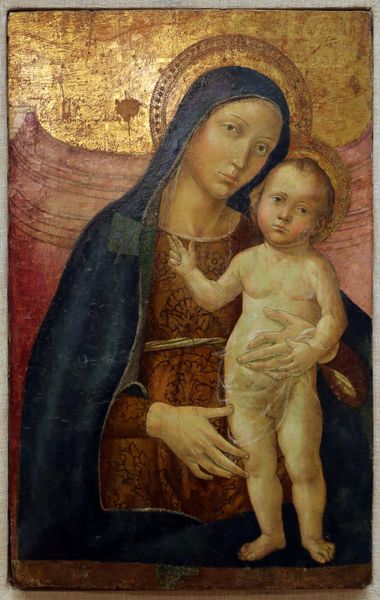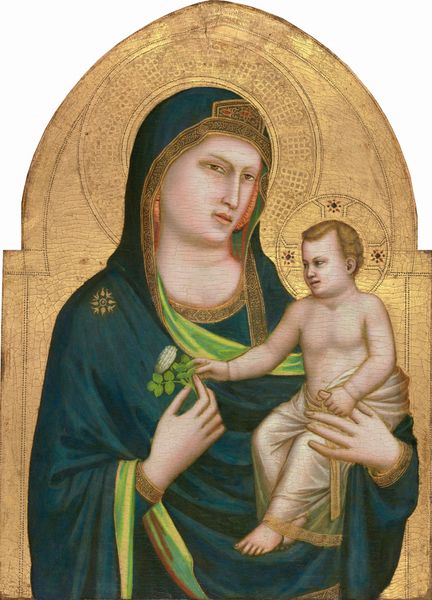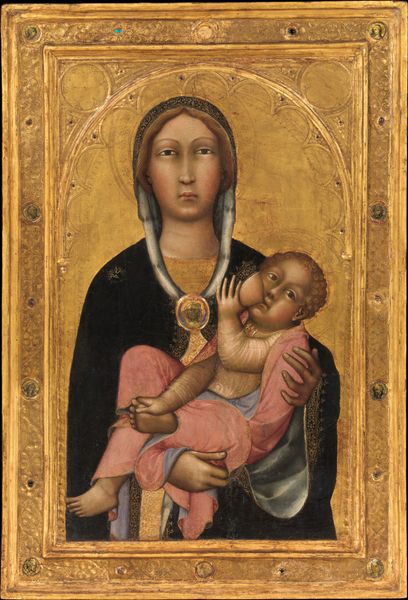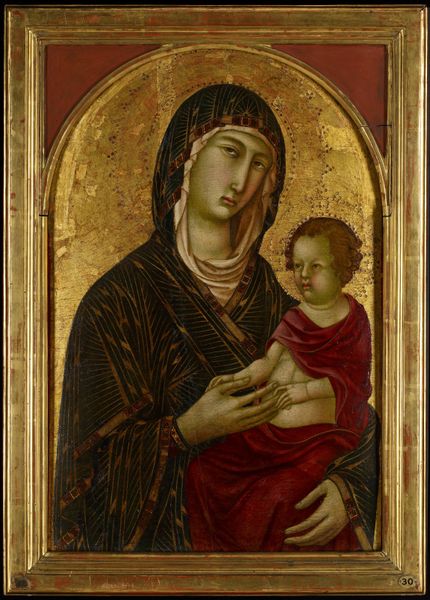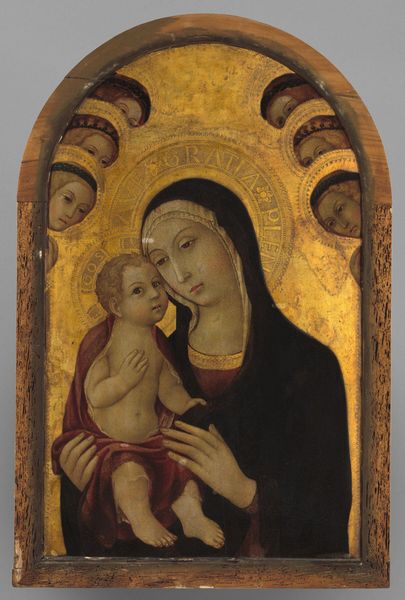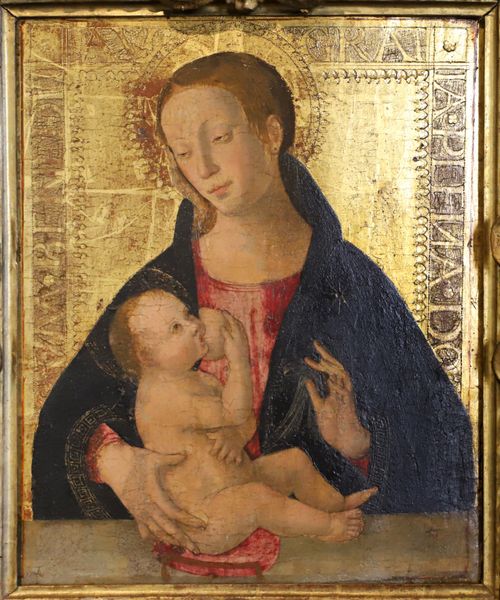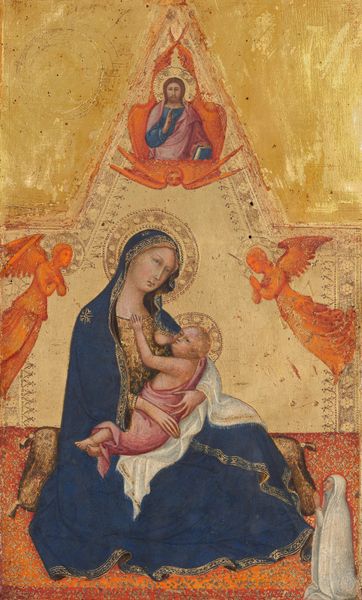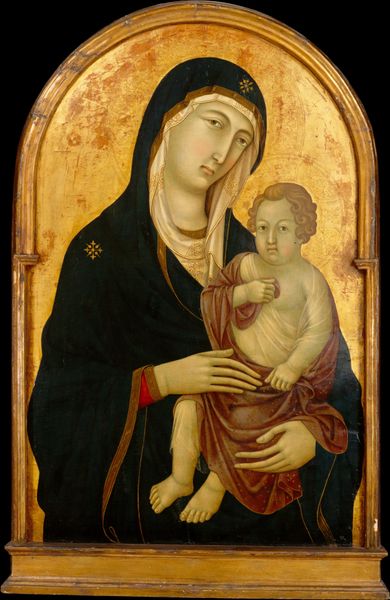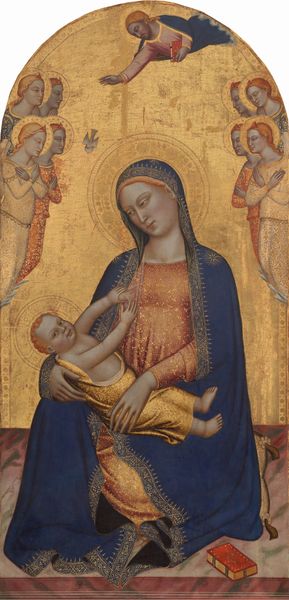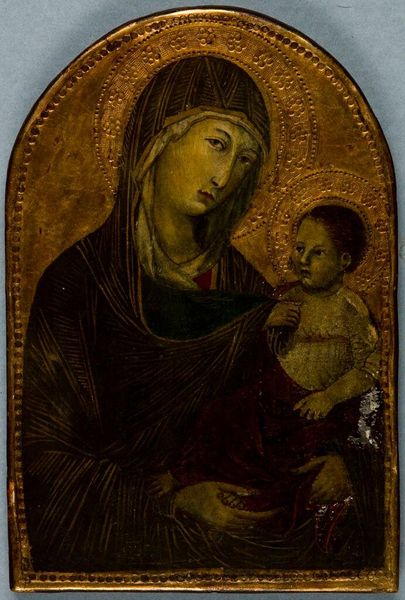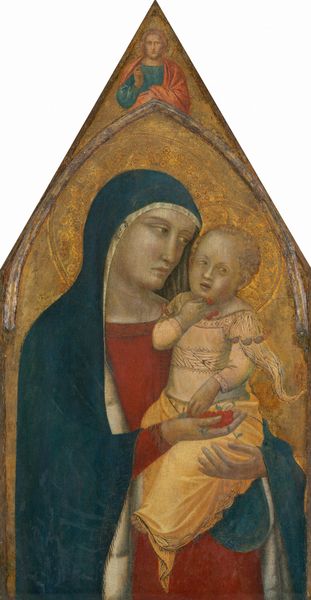
panel, tempera, painting
#
portrait
#
woman
#
medieval
#
panel
#
tempera
#
painting
#
figuration
#
oil painting
#
child
#
history-painting
#
facial portrait
#
italian-renaissance
#
portrait art
Dimensions: 117.8 x 86.2 x 1.4 cm
Copyright: Public Domain
Curator: Looking at this "Madonna and Child" by Barnaba da Modena, painted in 1367, one can't help but be struck by the utter tenderness of the figures depicted. It feels deeply personal, almost devotional. Editor: My first thought? The gold! It dominates. Then you notice the tempera; the way those pigment layers would have been built up, meticulously. What’s intriguing to me is thinking about who was commissioning these pieces. Curator: Right, the commissioning shapes the artist’s choices. Now, the Madonna’s face... such serenity, such sadness, a peculiar, melancholic beauty that speaks of burdens and the weight of prophecy. You feel the materials contribute to this, right? That gilded ground throwing shadows forward... Editor: Well, it is tempera on a wood panel, after all, so inherently flat, deliberately so, almost Byzantine in its flatness. But also practical, given its portability. Who would be carrying this piece? Where would they be taking it, and why? We know precious pigments such as lapis lazuli would have been traded over long distances in that period to render the ultramarine... Curator: Absolutely. The lapis gives such incredible depth to her cloak. When I look into that ultramarine, I see the boundless night sky. Tell me more about this blue... Editor: In 1367, vibrant colors meant access, global supply chains, artisanal mastery. Ultramarine specifically denoted a patron willing to pay top dollar. Barnaba, then, had the skills, but also the connections necessary to command access to rare commodities in high demand at the time. Curator: Right, those deep blues. And the child—notice that he isn't a rosy-cheeked cherub, but rather a miniature, thoughtful man. Those knowing eyes see far beyond his years. This speaks volumes of theological narratives shaping art. Editor: Theology always factors in—it's the framework—but let's also consider the material support system for these types of works. Someone prepared that panel, someone ground those pigments, someone likely assisted Barnaba directly in rendering all those intricate folds... Curator: I do feel this devotional piece speaks directly to the divine within the mundane, the magic and the melancholy. The materials are carefully laid bare, and this is what gives "Madonna and Child" its depth. Editor: Yes, considering who handled the pigments, whose labor made this vision manifest.
Comments
stadelmuseum about 2 years ago
⋮
Signed and dated 1367, this panel is one of the earliest works by its maker, an artist active in Genoa. It initially formed the central panel of a multipartite altarpiece whose remaining sections have been lost. Its original location is unknown. As seen in the green underpainting of the flesh tones and the gilding of the Virgin’s robe, the artist was still following the Italo-Byzantine icon tradition. At the same time, his rendering of the tender intimacy between mother and child demonstrates his familiarity with the Sienese and Florentine painting of the time.
Join the conversation
Join millions of artists and users on Artera today and experience the ultimate creative platform.
